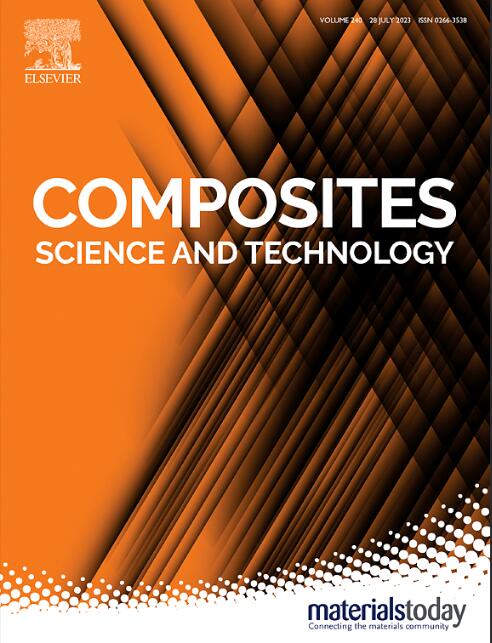Hybrid effect in multi-directional carbon/glass composites
IF 9.8
1区 材料科学
Q1 MATERIALS SCIENCE, COMPOSITES
引用次数: 0
Abstract
The hybrid effect is the enhancement in the failure strain of the low strain material in a hybrid composite compared with the failure strain of the same material in a non-hybrid composite. It has been well established that in unidirectional carbon/glass composites under tension with the carbon layer as the low strain material, the hybrid effect depends mainly on the carbon layer thickness. In this work, experimental and numerical results are presented to show that in multidirectional composite laminates with two separated 0° carbon plies, the interaction between the 0° carbon layers and the presence of matrix cracking in the adjacent layers can significantly change the carbon layer fragmentation strain and consequently modify the observed hybrid effect. The interaction between 0° carbon plies is analysed using the induced strain increment after the fragmentation of one of the 0° carbon plies. The results show that the layups with lower interaction between the two 0° carbon plies and those with no matrix cracking in the neighbouring layers have a higher hybrid effect.

多向碳/玻璃复合材料中的杂化效应
杂化效应是指低应变材料在杂化复合材料中的破坏应变比相同材料在非杂化复合材料中的破坏应变增大。在以碳层为低应变材料的单向拉伸碳/玻璃复合材料中,杂化效应主要取决于碳层厚度。实验和数值结果表明,在具有两层分离的0°碳层的多向复合材料层板中,0°碳层之间的相互作用以及相邻层中存在的基体裂纹可以显著改变碳层的断裂应变,从而改变观察到的杂化效应。利用0°碳层破碎后的诱导应变增量分析了0°碳层之间的相互作用。结果表明,两层0°碳层之间相互作用较小的层和相邻层中没有基体裂纹的层具有较高的杂化效应。
本文章由计算机程序翻译,如有差异,请以英文原文为准。
求助全文
约1分钟内获得全文
求助全文
来源期刊

Composites Science and Technology
工程技术-材料科学:复合
CiteScore
16.20
自引率
9.90%
发文量
611
审稿时长
33 days
期刊介绍:
Composites Science and Technology publishes refereed original articles on the fundamental and applied science of engineering composites. The focus of this journal is on polymeric matrix composites with reinforcements/fillers ranging from nano- to macro-scale. CSTE encourages manuscripts reporting unique, innovative contributions to the physics, chemistry, materials science and applied mechanics aspects of advanced composites.
Besides traditional fiber reinforced composites, novel composites with significant potential for engineering applications are encouraged.
 求助内容:
求助内容: 应助结果提醒方式:
应助结果提醒方式:


